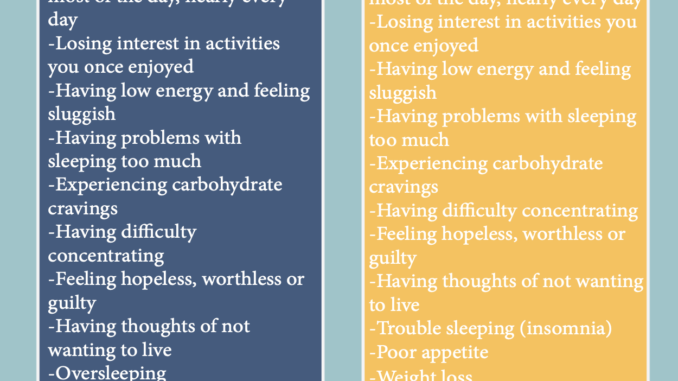
photo credit: Sophia Robinson
When the seasons change, from sunshine to dark days, long days to short days, it’s not just the weather that changes. As the seasons change, according to the Mayo Clinic, people tend to get seasonal depression annually at the same time of the year, causing their moods to fluctuate. According to the McGovern Medical School in 2022, nearly 4 in 10 Americans experience a declining mood during the winter.
Seasonal depression can be especially tough for high school students who are already diagnosed with depression. It tends to disrupt someone’s daily schedule or routine. Junior Melanie Richardson is one of these people.
For Richardson, seasonal depression doesn’t quite disrupt a routine since she’s at school most of the day, but it does affect her after-school schedule. Sleeping more and procrastinating homework are a few of the symptoms she noticed—these fall under the symptoms of winter depression, classified by the Mayo Clinic.
Mayo Clinic and Richardson both find that when people have depression, they generally feel the symptoms more prominently during the seasonal change.
“I’m diagnosed with depression, so when the winter season kicks in, it’s like my symptoms are a lot more obvious. However, using the usual coping mechanisms I use, it’s not too bad. Unless school is starting to stress me out, it gets worse,” Richardson said.
Similarly, School Psychologist Makenzie Nordquist agrees with the fact that the changing of the weather may exemplify preexisting depression.
“If a student does have depression, it, the weather, can make it worse, especially vitamin D and sunshine can help boost your mood, so when it’s darker, and when you leave school at 2:35 p.m. and an hour later it’s really dark, then it can definitely affect you,” Nordquist said.
To differentiate between seasonal sadness and clinical depression can be tough though. According to the Mayo Clinic and Nordquist, people should pay attention to their patterns and how long their feelings have been down, and whether this is a repetitive cycle.
“If a student is concerned, they can just think back through the year and ask themselves: have I always felt like this? is this a common thing I’ve felt? Or if they can think, at the beginning of the year it was kind of hard, but during the summer I was fine, but now I’m feeling it again. That can be an indicator that it is due to the weather that they’re not feeling too great,” Nordquist said.
School and other events like work or even personal issues at home can amplify the effects of the seasonal depression, as seen by Richardson.
“Family can definitely play a role in it. It just depends on your family dynamic, how comfortable you are talking to them and whether you have siblings and talk to them or not,” Nordquist said.
Richardson personally spends time with her dog or her brother to help cope with her seasonal depression. According to Nordquist, it’s always good to talk to somebody like a friend, peer or family member when not feeling well.
“It’s good to just talk it through, your friends can give you positive affirmations, your teachers can encourage you academically and your parents can help you. You can do things you enjoy like going on a walk,” Nordquist said.
Seasonal depression can be hard to deal with. The bad weather, the feeling of losing all motivation and balancing a social and work life all at the same can get to a person. While it may feel rough to plow through life while not feeling great, Richardson suggests keeping your head up, and affirming that things will get better once the weather changes back.


